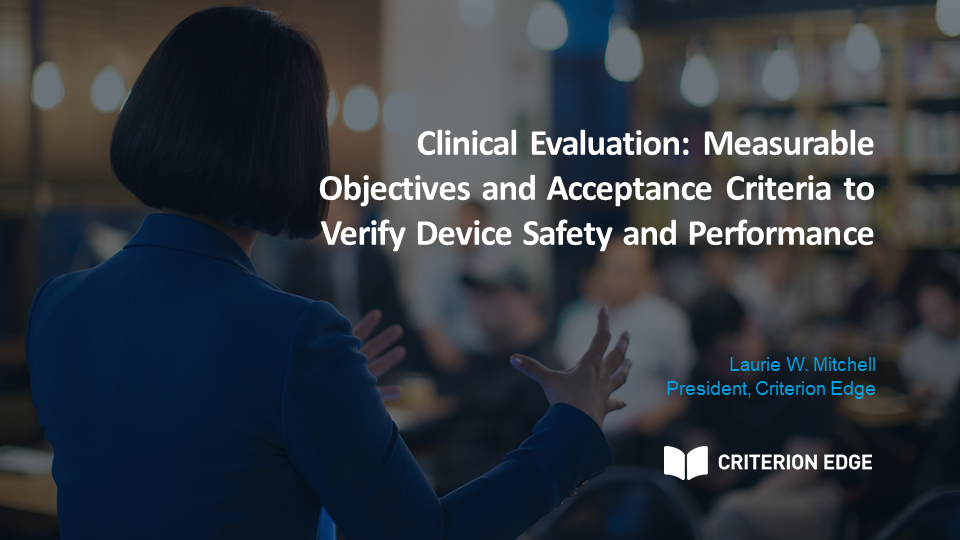Author: Suzanne Broussard
All medical devices sold in Europe must have a Clinical Evaluation Report (CER), and specific and measurable safety and performance endpoints are paramount for an acceptable CER. However, many small medical device manufacturers are struggling to adequately define and subsequently document measurable safety and performance endpoints, especially in the literature review, to support an evidence-based evaluation.
newest regulations for medical devices, Medical Device Regulation (MDR) 2017/745 and MEDDEV 2.7/1 revision 4, set high standards for confirming safety and performance when using the device according to the manufacturer’s Instructions for Use. Regulations under the old MDR and MEDDEV were not as demanding, and manufacturers are not accustomed to the current systematic process of CER evaluations.
These relatively new requirements for clinical evaluation extend to manufacturers trying to get new products into the European market, as well as those that are already selling medical devices. Safety and performance are central components of the evidence-based evaluation process for obtaining and maintaining CE Marking for MDR 2017/745 and MEDDEV 2.7/1 rev 4, and medical device manufacturers are expected to be in full compliance by May 26, 2020*. For manufacturers that already have products on the market, the CER must be updated throughout the product lifecycle.
For more information on the role of CERs in obtaining CE Marking for legal marketing in the European Union (EU), see Criterion Edge’s article What role does the CER play in getting a Medical Device Approved for Marketing in the EU?
Systematic literature reviews (SLRs) are a big part of the CER. The ultimate goal of the CER is to provide sufficient clinical evidence that the device achieves its intended purpose and is safe and effective. MEDDEV 2.7/1 rev 4 Section 4 defines evidence-based as:
- Clinical studies: clinical data from clinical investigations of the device concerned; or
- Existing data: clinical investigation(s) or other studies reported in the scientific literature, or a similar device for which equivalence to the device in question can be demonstrated, or
- Clinical experience: published and/or unpublished reports on other clinical experience of either the device in question or a similar device for which equivalent to the device in question or a similar device for which equivalence to the device in question can be demonstrated.
Note that this list is comprised primarily of endpoints that need to be generated by performing methodologically sound systematic literature reviews.
Clearly setting safety and performance objectives in the review of scientific literature proves to have its own special challenges. Conducting systematic literature reviews requires expertise, people, and time.
- The individual or team of evaluators should possess knowledge and expertise of research methodologies (including clinical investigation design and biostatistics), information management, regulatory requirements, and degree and experience equivalence (MEDEV 2.7/1 rev 4 Section 6.4).
- It is often difficult to find experienced personnel that meet all the requirements to perform the clinical evaluation.
- Performing systematic literature reviews takes time, lots of time!
A systematic literature review is much different than an internet–based literature review for a scientific manuscript. It requires a clear and methodologically sound search strategy coupled with a robust literature search. Every decision needs to be documented.
There are many circumstances in which using experts in some areas of CER preparation can fill in gaps where expertise may be needed, or time is of the essence. To determine if hiring a consulting expert to facilitate timely and expert CER development, ask your organization these questions.
Does your team meet all the criteria for preparing the clinical evaluation?
Does your team know how to document the methods used to generate systematic literature reviews?
Are they familiar with what aspects to consider when determining relevance?
Do they have the time to perform systematic literature reviews?
* MDR deadline has been extended one year to May 26th, 2021
(more…) 



